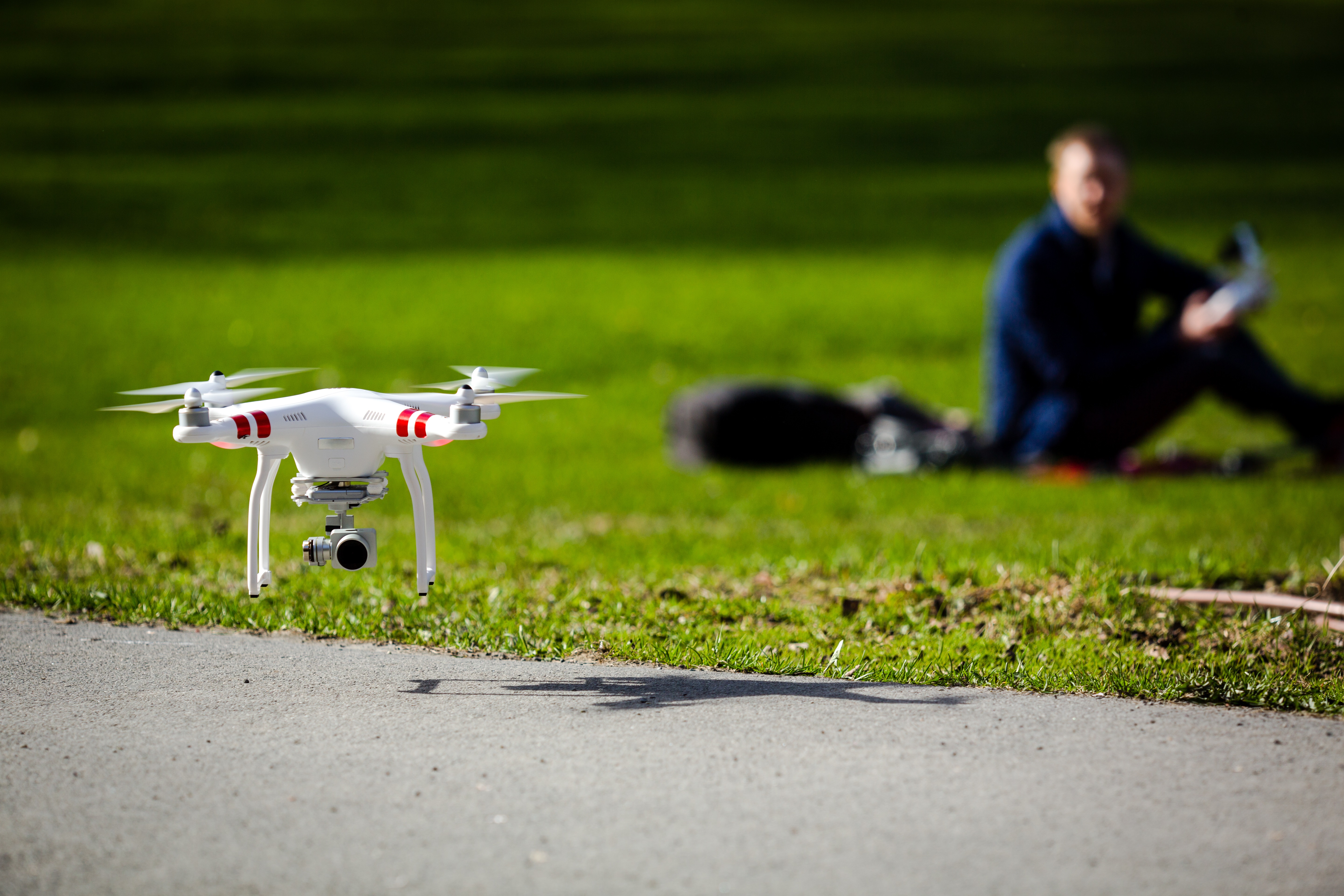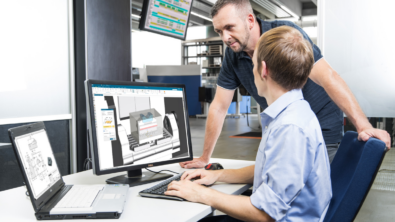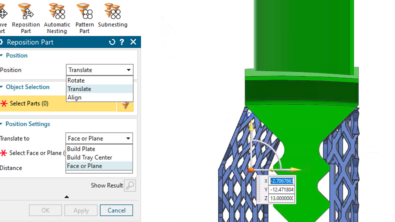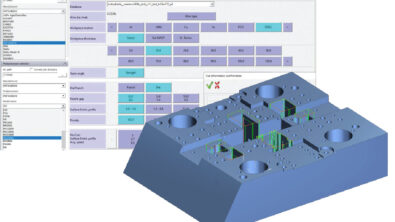How digitalization is changing manufacturing production

We have lift off!
Production is changing — and not slowly, but at an incredible pace. This transformation is being driven by digitalization, and is not just the concern of large companies: small and medium-sized manufacturers can also take advantage of new digital tools and processes. But how and where do manufacturers begin? Using the example of quadcopter production, Siemens shows how digital processes can be introduced one step at a time.
With its Digital Enterprise Software Suite, Siemens is placing its focus on the topic of digitalization. Siemens is the first manufacturer to succeed in mapping the production process in a fully integrated manner — from the first design draft, to programming and control of machine tools, right through to the finished product. It has gone even further than this, in that real production data can now be used in a closed control loop to continually improve the information that underpins planning, while sensor data makes it possible to maintain machines more flexibly on an as-needed basis, depending on use (predictive maintenance).
For companies with internationally linked sites and processes spanning from design to finished product, it is recommended that the entire Digital Enterprise Software Suite be used — ideally alongside the cloud-based IoT operating system MindSphere. The advantage of digitalization is that companies will become more competitive as a result of increased flexibility, efficiency, and quality — along with decreased throughput time. This equally applies to medium-sized businesses and smaller contract manufacturers. Modular software can be used to digitalize processes in a targeted manner and with a manageable level of effort, as the below example of quadcopter production demonstrates.
The digital process chain begins with the design
Even for many small contract manufacturers, shop floor programming on the machine is increasingly being done offline using CAD/CAM programs. The advantages are obvious: the machine remains productive during offline programming; complex components can be programmed more reliably; and full use can be made of the benefits of modern five-axis machines. Siemens offers a powerful CAD/CAM solution for this phase in the form of NX. Here, users will not find the typical design tools. With DFMPro for NX, it is now possible to test whether a product will be able to be produced as early as the design phase. Another advantage is in the case of molded parts, clearly illustrated by the quadcopter project. The same program can be used for the design and engineering of the component and mold.
Contract manufacturers will see new opportunities and options arise through additive production processes such as 3D printing. This allows workpiece prototypes and molds to be presented to the customer very quickly and cost-effectively. The components do not have to be converted in NX, instead the 3D print order can be launched directly from NX for initial sample parts. This means that production firms can directly integrate additive procedures in their normal software environment.
Digital process planning
Many of the advantages of digitalization are not particularly spectacular in technical terms, but in practice offer manufacturing companies enormous benefits, such as digital workflow planning. The simplest functions allow tasks to be visualized, and resources and information allocated, on the computer. This information is then stored centrally by Siemens’ NX software, including computer- aided manufacturing (CAM) data, clamping fixtures, work instructions, etc. All changes are recorded through an integrated revision check, and are therefore transparent. At the touch of a button you can pool together and send programs, work instructions and additional information to the machines without any paperwork. Users can bring up all of the necessary information for an order on the machine without wasting time searching. Particularly in the case of the highly flexible production of smaller companies — or when products are changed often — this ensures considerably improved oversight, efficiency, and reliability.
Program simulation on the digital twin
A digital twin of the quadcopter and corresponding molds were created during the design and engineering phase. Within the digital process chain, it should now be possible to not only generate the NC program but also test its feasibility on the respective machine tool. However, in order to achieve this, there must be a digital twin of the machine tool. In NX, Sinumerik’s virtual kernel (VNCK) can be used to precisely map the behavior of the control system and the machine. At EMO 2017, this will be demonstrated using the example of a Hedelius five-axis machining center that creates complex free-form surfaces. Realistic machining simulation on the digital twin makes it possible to reliably identify errors, unnecessary travel — or even head collisions — and optimize the program offline. The benefits for production: the programs reach the machine in a run- ready state; time-consuming tests and programming are not required; and the machine’s productivity is increased. The smaller the batch sizes, the greater the competitive advantage for the production company.
Alternatively, offline program creation can take place on a cyclical basis in Sinutrain. This option is especially helpful for shopfloor-based contract manufacturers that are unable to invest in major IT infrastructure or CAD/CAM workstations. With Sinutrain, Siemens offers such companies an efficient route to the digital process chain. In the new versions, users have the latest Sinumerik software and Operate interfaces at their disposal from the outset.
New tools for production planning and manufacture
A machine tool is only productive when it is machining. Uncertainty over the correct program version or searching for tools increases setup time and downtime, and there- fore reduces productivity. Software for managing programs and tools creates transparency and reduces setup time. Siemens offers the ideal products for this with the Manage MyPrograms NC program management and Manage MyResources tool management suite. If the pro- grams, tools, and other resources are digitally prepared, things can get moving along much more quickly in thereal world: on the shop floor, on the machine. However, even with digital processes it is only possible to map what the machine and control system can actually do. In addition to offering digital tools, controllers, and automation technologies from a single source, Siemens has upgraded the latest Sinumerik CNCs with a range of new functionalities. One example is Sinumerik MDynamics with Top Surface, which optimizes the machining of free-form surfaces by improving look-ahead. Another new feature of Sinumerik 840D SL is a three-stage collision avoidance system, which increases machine and workpiece safety.
Tempting helpers: robots
Thanks to their high degree of latitude, robots can support machine tools with key work steps, for example by deburring or machining workpieces that are difficult to reach. The disadvantage is that until now, robots have not had their own controllers and required special expertise. With Sinumerik 840D sl, Siemens is now providing a CNC that integrates robots into the shop floor. RunMyRobot makes it possible to move the robot axes and implement the programming, teaching and monitoring processes via Sinumerik Operate. For several applications this makes working with robots extremely attractive, even for small contract manufacturers, especially as robots are becoming much less expensive.
Plenty of support through training and services
Digitalization calls for new skills — both within an organization and on the shop floor. This is another area in which Siemens provides its customers with support. Together with its training partners, Siemens offers a wide range of training sessions that are constantly being expanded to include more information on digital workflows, complemented by consulting and services. For example, companies can prepare for their foray into digital workflows through the Digitalization Check and Digitalization Preparation services. The quadcopter project at EMO 2017 not only demonstrates that Siemens can provide powerful tools for integrated digital process chains, it also illustrates that companies can choose the route they want to take through the world of digitalization.
Digital Machine Shop blog and video series
Want to learn more about digitalization, and find tips and tricks for implementing modern processes in NC-supported production in a compact, convenient, and entertaining way? Just click on the tutorials and videos about digitalization in the Digital Machine Shop blog and video series.
If you have a comment or question, please use the ‘comment’ box below.



